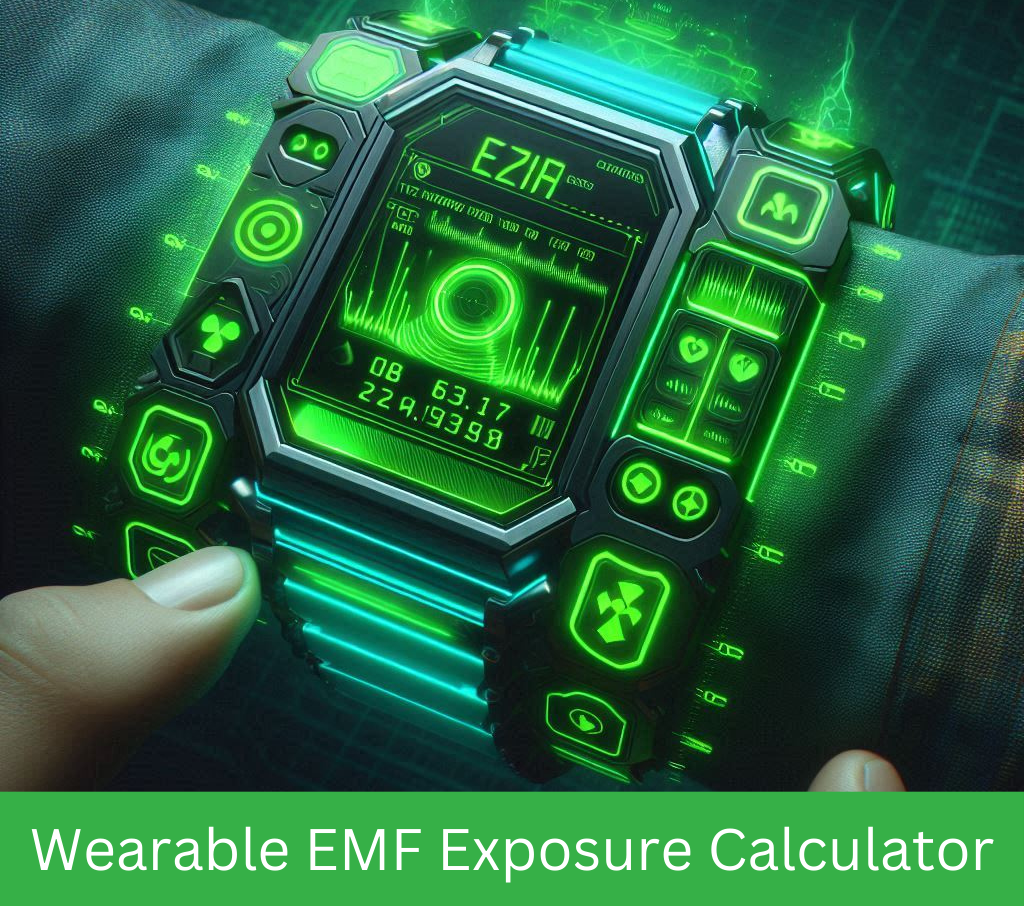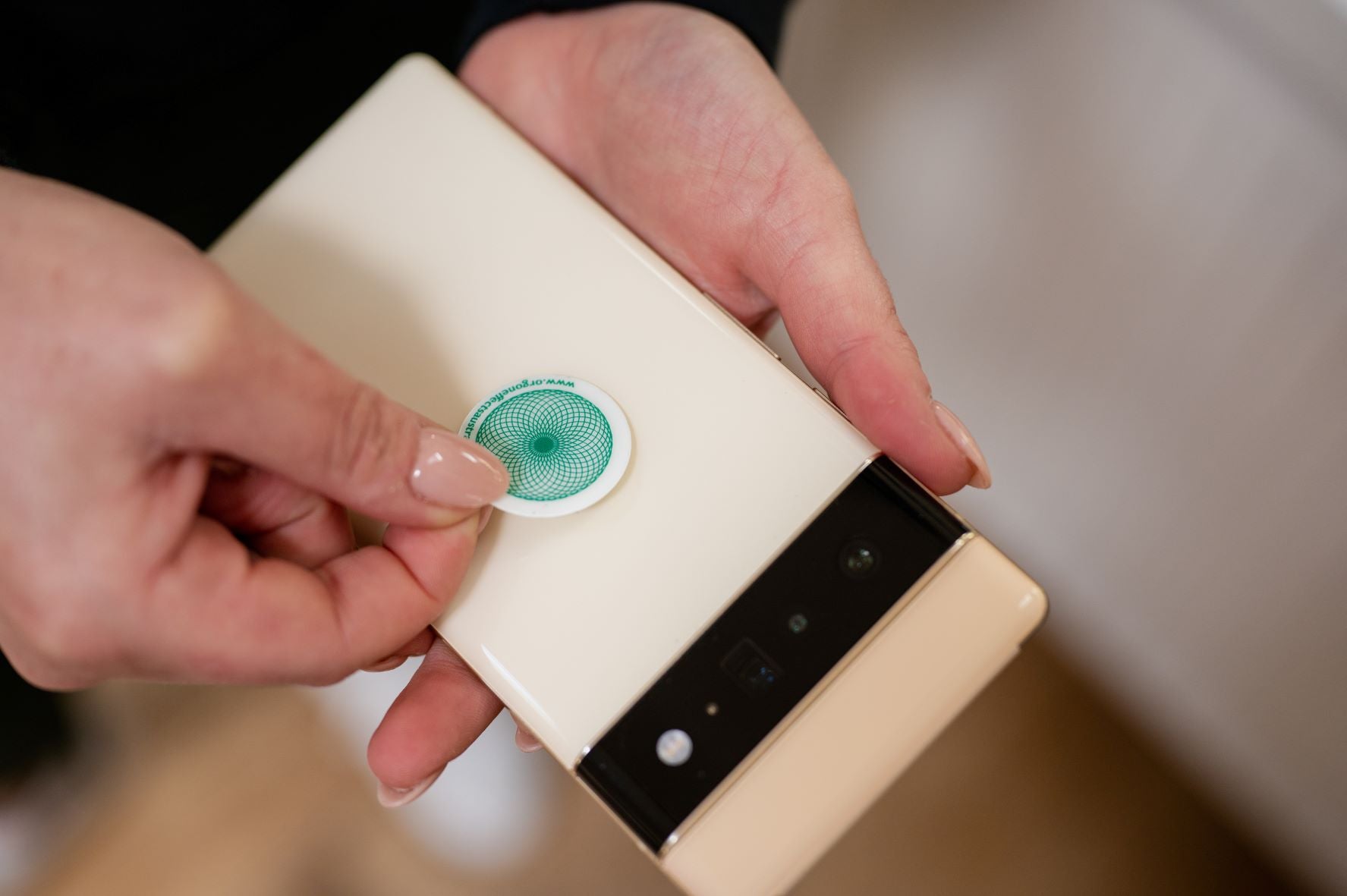Concerned about the electromagnetic fields (EMFs) emitted by your lighting? Wondering how much exposure you're getting? In this post, we'll delve into the world of EMF emissions from lights and provide a handy EMF light calculator to help you assess your risk.
One of the hidden toxins in our homes that we often overlook is the exposure to electromagnetic fields (EMF) generated by our electricity. Many of us don’t fully understand the potential harm electricity can have on our bodies and homes, particularly from a phenomenon known as “dirty electricity.” This form of EMF exists in every household and can contribute to various health concerns.
Making healthier choices where possible can help reduce our exposure to dirty electricity.
One of the simplest changes you can make is swapping out the light bulbs throughout your home. Light bulbs are easily accessible at most hardware stores, and replacing them is a quick and hassle-free way to reduce EMF exposure.
By using our Lighting EMF Calculator, you can discover just how much EMF your lights are emitting. This tool helps you compare the EMF levels of different types of bulbs—LED, CFL, and incandescent—so you can make informed decisions to protect your home and well-being.
Do Lights Emit EMF?

Lightbulbs might seem harmless, but they can actually create dirty electricity and increase EMF exposure in our homes without us even realizing it. However, not all lightbulbs are the same. Below is a list of the common types of lightbulbs we use at home, along with their pros and cons when it comes to dirty electricity.
LED Light Bulbs:
So do LED lights emit radiation? LED light bulbs often emit a blue tint, which is harmful to the eyes from a health perspective and can increase the risk of developing cataracts. Blue light also reduces the production of melatonin, which is known to be the hormone responsible for regulating sleep quality.
LED bulbs usually operate on direct current, which is one of the major sources of dirty electricity and EMF radiation in the home.
LED bulbs convert the frequency of alternating current (AC) to direct current (DC), which can send small amounts of electricity back into the power line. This disruption creates dirty electricity within our home.
Compact Fluorescent Lightbulbs (CFL):
These spiral-shaped fluorescent bulbs are among the most popular types of lightbulbs due to their availability and low cost. Most of us have them somewhere in our homes and they have become the standard replacement for the older incandescent bulbs.
Unfortunately, CFL light bulbs are far from ideal for home use for several reasons.
First, as far as dirty electricity goes, CFL bulbs use high-frequency electricity rather than the 60 Hertz that’s common in most homes. These light bulbs convert alternating current to direct current, which results in voltage surges and spikes. These surges and spikes emit large amounts of EMF radiation.
Basically, our electrical systems are not designed to manage the high-frequency requirements of CFL bulbs, and because they generate dirty electricity in our homes, they also generate EMF radiation as dirty electricity accumulates in the wiring.
Another reason to avoid CFLs is the ultraviolet light these types of bulbs produce. Ultraviolet light produced by CFLs can cause damage to the skin and cells in our bodies.
Fluorescent Light Bulbs:
Although most people no longer have fluorescent bulbs in their homes, some can still be purchased. Additionally, most office buildings and spaces still rely on fluorescent light bulbs.
The problems with fluorescent bulbs are very similar to those with CFLs but on a larger scale. Fluorescent bulbs emit powerful magnetic fields that can extend up to 18 inches from their coils.
Regular exposure to fluorescent bulbs has been linked to a higher risk of developing malignant melanoma.
Incandescent Light Bulbs:
Incandescent bulbs are mostly a thing of the past and can be quite difficult to find these days. Although they are some of the safest bulbs because they use the alternating current in your home, they are the least efficient in terms of energy consumption as well.
Incandescent bulbs are less efficient because they use energy to heat the filament instead of producing light, which means they consume much more power than other types of bulbs.
The light produced by incandescent bulbs also has a more natural light tone and does not have a blue tint like newer CFL and LED bulbs.
Halogen lights fall in the same category as incandescent bulbs. However, they use halogen gas instead of the argon gas used in incandescent bulbs. Typically, halogen gasses require and produce more heat, but they generally have longer lifespans than incandescent bulbs.
Because of their simple design, incandescent bulbs are also the lowest EMF light bulbs available.
These bulbs do not emit RF radiation, and their design generally aligns with the wiring in most homes.
How Light Bulbs Affect Our Health

So, let’s talk about electric and magnetic fields (EMF) and your health. First, it’s important to understand that electromagnetic fields are everywhere and occur naturally on Earth and in our world.
The danger of EMF exposure comes from how often we’re in contact with them at home and the intensity of the radiation produced by our electronic devices and appliances. The intensity of EMF radiation sources in our homes varies, but some of the most dangerous sources of EMF radiation include our cell phones, Wi-Fi devices, computers, microwave ovens, and televisions.
Research on EMF radiation is ongoing, but it has already been identified as a potential carcinogen to the human body. The World Health Organization (WHO) has found that more exposure to EMF radiation can lead to health problems like fatigue, mood swings, headaches, asthma, fertility problems, digestive problems, sleep disorders, and memory problems.
Besides these problems, another study also linked chronic diseases like heart problems, cancer, diabetes, and Alzheimer’s disease to EMF radiation. Dirty electricity that generates EMF radiation in our homes and wiring has been studied and shown to have effects on the body, including links to conditions like multiple sclerosis and diabetes.
Healthier Choices for Light Bulbs
While there are ways to filter out dirty electricity, the most effective solution is to reduce the number of devices that produce it.
- Invest in an EMF and Earth Radiation Harmoniser
The Geoclense EMF and Earth Radiation Harmoniser consistently generates healthy beneficial Negative ions that work by harmoniously neutralizing your entire property and home all the way to its boundaries, counteracting each one of these destructive energies such as EMF radiation and dirty electricity.
Our Geoclense Neutralizes over 30 noxious EMR fields unique to buildings in the home and workplace. The Geoclense is a healthy, negative charge resonance field generator designed to balance the noxious, unhealthy positive charge resonance created by 5G and all forms of EMR, RF, Wi-Fi, Earth Radiation, and Bioplasmic Radiation.
- Avoid smart light bulbs whenever you can. Smart light bulbs emit radiofrequency (RF) radiation, similar to what comes from cell phones and tablets, which can have an extremely negative impact on our health and well-being.
- Remove dimmer switches if possible. While we also appreciate low lighting and ambiance, dimmer switches are a recipe for high exposure to EMF and dirty electricity. The light switch requires different levels of current, which produce spikes and surges when trapped.
- Be mindful of LED lights. We know that LED lights generate a lot of dirty electricity and EMF pollution in our homes. However, we recognize that some lighting options, such as strip lighting and can light, are only available in LED form. It is best to use LED lights in areas where you are not sleeping and that are at least two feet away from the bulb. EMF radiation decreases rapidly as you move away from the source, so placing lights farther away from where you spend most of your time can help lower your exposure.
- Use incandescent bulbs in bedside lamps. To cut down on EMF exposure, it’s best to focus on the areas where you sleep. All the light bulbs on your bedside table will be close to your head all night while you sleep. Use incandescent bulbs in your bedside lamps as they emit very little EMF radiation and can help keep you protected while you sleep.





